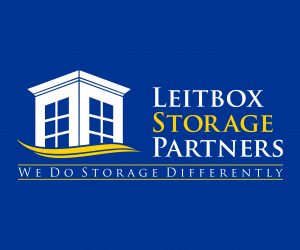Blue Vault Discusses Velocity Ledger Blockchain-Enabled Trading Platform
An Interview with Jon Haahr of Silver Portal Capital and Julian Jacobson of Fundamental Interactions, Part I

Blue Vault recently discussed the coming Velocity Ledger (“VL”) blockchain-enabled trading platform for nontraded REIT shares, DSTs, limited partnership interests in joint ventures, and eventually, individual commercial real estate properties and portfolios, with two of the company’s principals, Jon Haahr of Silver Portal Capital and Julian Jacobson of Fundamental Interactions (“FI”). We believe VL has the potential to revolutionize and transform the entire alternative investment industry for real estate, providing liquidity, transparency and fair valuation to the holders of these securities in the secondary market.
The key to this new platform for secondary trading and new security issuance of what are currently illiquid real estate securities is its application of the blockchain and distributed ledger technology. The platform will provide real estate sponsors, market makers, financial advisory firms, IBDs and investors with distributed ledger-based new issuance, tokenization, and trading solutions. But all of this sounds confusing to those of us who are unfamiliar with the blockchain and distributed ledger technology and what may be the greatest revolutionary development in financial markets since the internet.
Perhaps the best way to proceed with this discussion is to refer the reader to several articles on blockchain and distributed ledger technology to introduce the key concepts for those who, like most of us, haven’t gotten caught up in the enthusiasm (bordering on mania) over bitcoin and other “crypto-currencies.” Please see the end of this article for some helpful references. As Julian Jacobson said in our interview, we don’t need to know how our smartphones work to recognize their value and have them transform the way we go about our daily lives. Likewise, we won’t necessarily need to understand how blockchain and distributed ledgers work to use them to enhance the marketability and reduce the distribution cost of real estate securities.
Now, what are the founders of Silver Portal and Fundamental Interactions up to and how can their new platform revolutionize our industry?
First, a key element in this new initiative is the Delaware Board of Trade (“DBOT”) and its regulated Alternative Trading System (“ATS”) which is a strategic partner to Velocity Ledger as they inaugurate the new technology platform. When Blue Vault first heard about this proposal, many of our questions to Jon Haahr, the founder of Silver Portal, concerned the way the new platform would deal with the regulatory complexity of the nontraded REIT market and any other illiquid securities that could be traded. Because the DBOT ATS is already functioning within this regulatory environment, it is uniquely qualified to host Velocity Ledger’s technology platform. DBOT has already blazed a trail utilizing blockchain and distributed ledgers in security trading, fully compliant with FINRA/SEC regulations.
Likewise, Fundamental Interactions brings to the project their deep blockchain experience and existing trade matching and clearing technology that has been proven in the securities trading environment. FI has been involved in blockchain applications since 2013 and has a seven-year track record of designing high-performance multi-asset trading platforms for U.S. exchanges, brokers, dark pools and international execution venues.
For his part, Jon Haahr is the founder of Silver Portal Capital, LLC, a real estate investment/merchant banking and advisory boutique in San Diego, California, that provides a full complement of strategic/financial advice and capital formation services to high quality private real estate operators as well as public and non-traded REITs. Jon has more than 25 years of real estate, capital markets, and investment banking experience, and has been involved in advising on and raising capital of more than $20 billion over 140 transactions in the real estate sector.
When Blue Vault became acquainted with Jon Haahr’s proposal to create a secondary market for nontraded REIT shares and other illiquid securities, we shared his view that two of the major structural impediments to investors in these securities are their lack of liquidity and lack of transparency. Since their inception in the 1990’s, nontraded REITs have had very limited share redemption programs and only very infrequent re-valuations of their net asset values. Investors have been “locked in” for long holding periods with little transparency. Even recent regulatory changes that mandate more frequent valuations via third-party appraisals of real estate investment portfolios have only marginally improved the transparency for nontraded REIT shareholders. High sales commissions and other fees were prevalent in the industry, but for years capital raise was robust. New programs were introduced each year because of the relatively high distributions being paid and commercial real estate’s appeal as a diversification tool due to its low correlation with returns in other asset classes. The nontraded REIT industry has raised over $130 billion and currently has $85 billion in assets under management in over 60 programs.
The secondary markets that do exist to transact sales of nontraded REIT shares, for example, have significant transaction costs, wide bid-ask spreads, and cumbersome paperwork and settlement procedures for shareholders. Third -party tender offers by firms seeking to fill the need for shareholders who need to liquidate their nontraded shares come with huge discounts to NAV, planning to capitalize on shareholder desperation and profit from eventual full-cycle liquidity.
Silver Portal and Fundamental Interactions saw the $50 to $60 billion in aggregate share values in the nontraded REIT sector that are currently “frozen” and unavailable to shareholders as just one example of a market in need of the technological solution that blockchain and distributed ledgers can provide. Velocity Ledger will give shareholders increased transparency, discovery and market-based pricing, as well as transaction settlement efficiencies, creating the potential to re-vitalize the nontraded REIT industry.
The business plan, as Velocity Ledger envisions it, is to establish the trading platform through DBOT in Q1 2018, begin the process of tokenizing secondary trading of nontraded REIT shares and begin trading in Q2 2018. The technology also has the capability to handle property titles and many of the functions currently fulfilled at significant cost by a host of intermediaries.
Importantly for VL, the vision is not limited to providing liquidity, transparency, and efficiency to the nontraded REIT market and the other illiquid securities mentioned above. The property sector is the largest asset class globally, and also the most opaque and inefficient. Worldwide valuation is estimated to exceed $217 trillion (with a “t”!) and it is estimated that $55-60 trillion is tied up in non-residential commercial, 90% of which is privately held and not traded on any exchange. Imagine if just a small percentage of that asset class were “tokenized” so that fractional interests could be efficiently and competitively priced and traded in the aftermarket with very low transaction costs. Combined with the inherent integrity and security of blockchain and distributed ledgers, that possibility hints at the enormous potential for Velocity Ledger’s platform.
In Part II of this report, we’ll get into the specifics of the Velocity Ledger platform.
References for Readers Who Wish to Better Understand Blockchain and Distributed Ledger Technology
http://velocityledger.com/doc/white_paper_02072018.pdf
Don and Alex Tapscott, Blockchain Revolution (New York, Penguin Random House, 2016)
https://www.i-scoop.eu/blockchain-distributed-ledger-technology/









